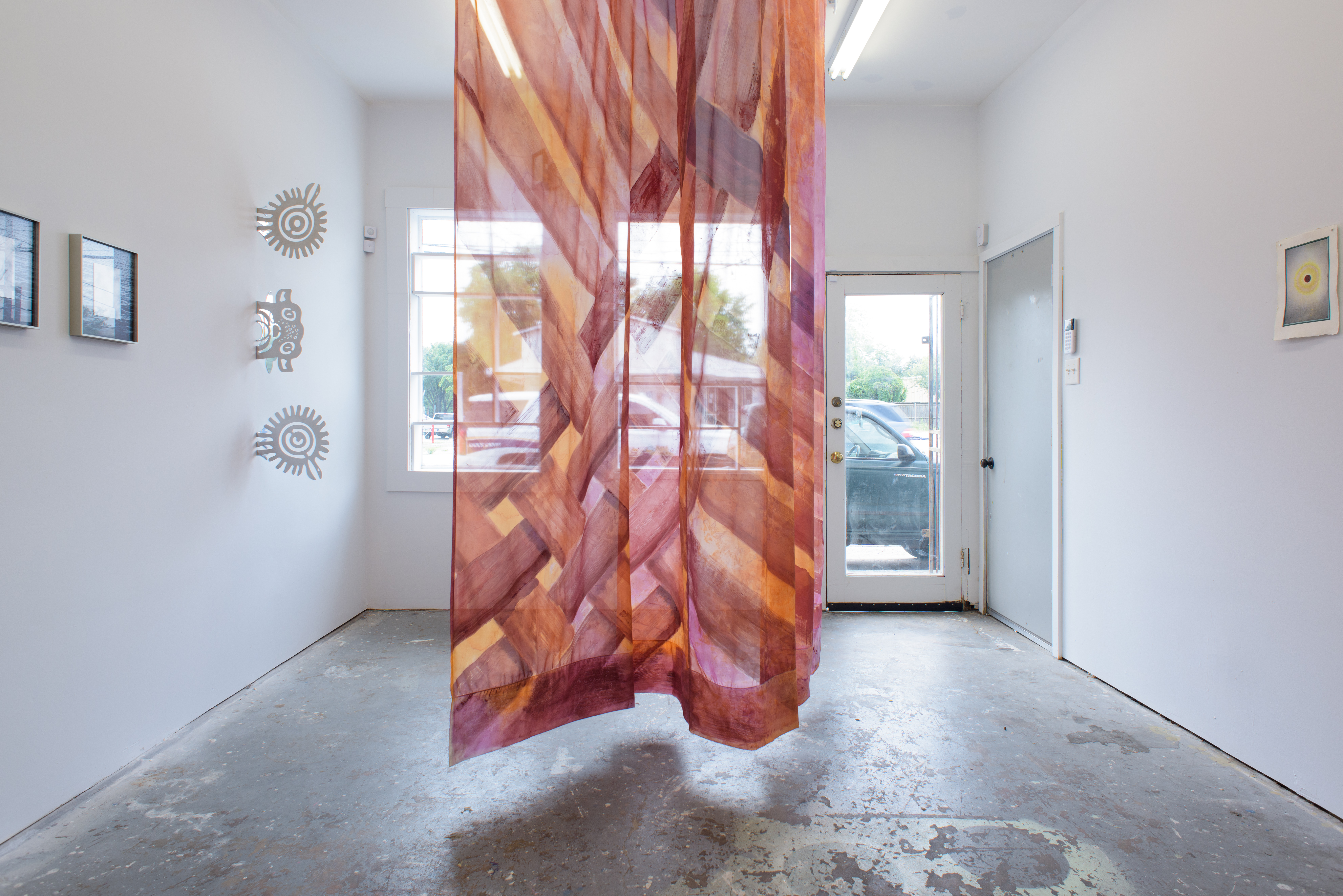
Moon Eats the Sun
Moon Eats the Sun
April 13, 2024 – August 24, 2024


Moon Eats the Sun
April 13 - August 24, 2024
Celeste, Saúl Hernández-Vargas, Julie Malen, Kian Mckeown, Ernesto Solana, and Alexis Zambrano.
Laura (the gallery)
1125 E 11th St, Houston, TX
Laura is pleased to shed light on Moon Eats the Sun, a group exhibition featuring the work of Celeste, Saúl Hernández-Vargas, Julie Malen, Kian Mckeown, Ernesto Solana, and Alexis Zambrano. The works of art in this exhibition explore, give reverence to, and interpret the mystery and power of the eclipse and other celestial events.
Ernesto Solana’s photographs emerge from the previous solar eclipse that passed over the United States of America and Mexico in October of 2023. Solana captured the shimmering shadows and the crescent shapes cast during that event, dappling his hand and the ground underfoot. Bordering these shadows, a glistening sea consumes the land, just as the moon eats the sun. His wall sculptures reference and reimagine such pre-Columbian iconography as the jaguar of Teotihuacán and flowers which morph into suns and birds drawn from pre-colonial stamps. As the sunlight passes over his sculptures, they cast shadows across the wall and ground, marking the passage of time. Solana considers the duality of the eclipse and its effect on animals; birds stop singing and fly to their nest to sleep as the nocturnal jaguar comes out to hunt.
Alexis Zambrano’s paintings on paper reference early modern depictions of eclipses with radiant rays exploding from behind the moon. Sourcing his visual material from books, illustrated manuscripts, vintage photogravures and daguerreotypes, Zambrano focuses on the lens glare and solar flares which add an energetic aura to the image. He then collages a charcoal-dazzled moon onto the painted surface interrogating depth and space. For Zambrano, this deeply spiritual practice, combined with his interest in numerology, informs every aspect of these heavenly vignettes, which cross into the abstract.
In many cultures and folk traditions, an eclipse represents an astronomical event during which a creature or deity devours or dismembers the sun or the moon. Following this thread, Julie Malen debuts a sculpture that imagines the process of dismemberment and the eerie impossibility of such a cosmic occurrence. Her sculpture is an unusual object–an arm becomes a fish, replete with fingernail scales, and, like a Möbius strip, becomes an arm again. Through this cycle, Malen signals the transformative force of the eclipse and suggests a relationship to the uncanny.
Worlds reside within Kian Mckeown’s surreal image of blue rubber gloves, which almost function like a pair of binoculars. Through each lens-glove, a human silhouette floats against a sunset’s sherbert horizon, enshrouding the shadowy figure in the fleeting golden, eerie dusk experienced within totality’s path. Disconcertingly, the image is not the same in each glove, and we’re left to ponder Mckeown’s illogical world that suspends reality.
Celeste’s vermillion textile installations channel solar and lunar energy. From our earthly position, celestial bodies appear to embrace during an eclipse; so do the hand-like forms in Celeste’s work. In each canvas, Celeste condenses a sequence of geometries that encompass from the spherical dimension of celestial bodies, architectural planes, and the human body as a standard of scale. Frequently invoking moments of acceptance and enfolding, Celeste’s works may evoke in the minds of viewers the vision of solar flares whipping around the perimeter of the moon, creating a fleeting moment of warmth and darkness, and a return to light.
Saúl Hernández-Vargas observes and documents the night skies that traverse the U.S.-Mexico boundary. His work understands this boundary as an imaginary line that can be redrawn or completely erased. He references the diaries and reports of the first surveyors, astronomers, engineers, and soldiers who marked the borderline in early maps circa 1849 to 1857. In doing so, Hernández-Vargas positions the sky as a political technology historically used to undergird the power structures of the nation-state. In these charcoal paintings of the sky, stars, and clouds Hernández-Vargas inserts objects found during his travels along the border. Such items as flowers, branches, rocks, and cotton reinforce a sense of connectivity between the Earth and the heavens above.

(click image to engage slideshow)
















